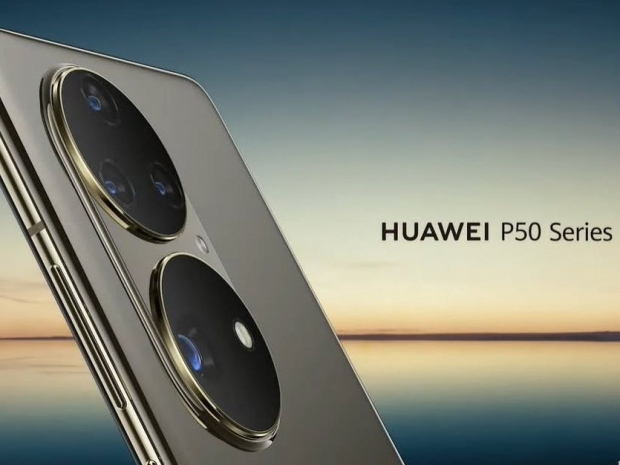The killer app on the phone is the camera - both the P50 and P50 Pro have - not one but two camera bumps, which together take up more than a third of the phone's rear width.
Huawei had teased images and videos of the lineup ahead of the event, but it does make for an eye-catching new design, which does away with the dual hole-punch design of the P40 series.
The P50 Pro has four cameras on its rear: a 50-megapixel main, a 64-megapixel telephoto, a 40-megapixel monochrome and a 13-megapixel ultrawide lens. The P50 has a similar camera bump, but it has one less lens. There's a 50-megapixel main camera, a 12-megapixel telephoto and a 13-megapixel ultrawide. Surprisingly, the base version has better optical zoom than the Pro version (5x versus 3.5x optical zoom). Each has 13-megapixel selfie cameras.
There is an OLED display, a large 4,360 mAH battery, and fast charging (66 watts). The P50 series comes in two flavours – one is a Kirin 9000 chipset and the other is Qualcomm's Snapdragon 888 4G CPU.
Qualcomm was granted permission to sell chips to Huawei last year. These chipsets are backed up by 8GB of RAM and 256 or 512GB of flash storage.
Huawei phones are Google free and the P50 series is one of Huawei's first new lineups to debut the company's own operating system, Harmony OS, which the Chinese telecom had developed in-house to replace Google Mobile Services in its smartphones.
At the moment it is all China only but when and if the P50 launches internationally, it should provide Huawei with the opportunity to gauge consumer response to the company's in-house software and whether it'll gain wider adoption among international shoppers amid the backdrop of Huawei's eroding smartphone market share.
The P50 Pro starts at 5,988 yuan ($930) while the P50 starts at 4,488 yuan ($695)

